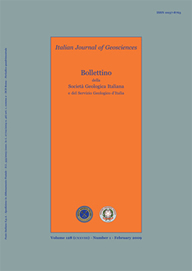
Deterioration processes on archaeological sites of Chellah and Oudayas (world cultural heritage, Rabat, Morocco): restoration test and recommendations
Lahcen Asebriy(*), Taj-Eddine Cherkaoui(**), Iz-ddine El Amrani El Hassani(*), Roberto Franchi(***), Francesco Guerrera(****), Manuel Martín-Martín(*****), Claudia Guerrera Patamìa(******), Giuliana Raffaelli (****), Pedro Robles-Marín(*******), Julian Tejera De Leon(*) & Francisco J. Alcalá(********)
(****) Istituto di Scienze della Terra, Università degli Studi di Urbino «Carlo Bo», Campus Scientifico, Località Crocicchia -61029 Urbino (Italy) - tel (+39) 0722.304.224 - francesco.guerrera@uniurb.it; giuliana.raffaelli@uniurb.it
(*****) Departamento de Ciencias de la Tierra y del Medio Ambiente, Universidad de Alicante, Campus San Vicente, San Vicente del Respeig - 03080 Alicante (Spain) - manuel.martin@ua.es
(******) Ministero Pubblica Istruzione, Roma (Italia) - claudiagpt@hotmail.com
(*******) Esfera Consultores de Construcción, Murcia (Spain) - pedro.robles@esferaconsultores.com
(********) Estación Experimental de Zonas Áridas, Consejo Superior de Investigaciones Científicas (CSIC), General Segura, 1 -04001 Almería (Spain) - fjalcala@eeza.csic.es
Abstract
Keywords
Get Full Text